
Wine Culture and Information since 2002 - Volume 22
 Wine Culture and Information since 2002 - Volume 22 |
|
Comparing Sagrantino di Montefalco Passito and Recioto della ValpolicellaThe two main representative sweet wines of Italy made of red berried grapes in a comparative tasting rich of surprises. Sweetness meeting power |
|
Sweet wines have always occupied a special place in the wine scene, in particular in the past, considered as real nectars of gods. Still today, they continue to catch a remarkable interest, still today they are considered as a high expression of prestigious wine making. Besides this, sweet wines are among the ones to express indisputable organoleptic qualities of remarkable complexity, a quite hard sensorial exercise. The production of sweet wines is mainly done by using white berried grapes, whereas the ones produced with red berried grapes are to be considered a rarity. For this reason, when the subject is about white wine, most of the times white wines only are considered, frequently forgetting about red ones. Indeed, sweet wines produced with red berried grapes are a very small quantity when compared to white ones, among them - in Italy - the main representative ones are the famous Sagrantino di Montefalco Passito and Recioto della Valpolicella.
|
The presence of vine in Montefalco has a long and amazing history. Vine, that in Montefalco is still today represented by the powerful Sagrantino, has always had a particular bond with the famous Umbrian town. Vineyards of Sagrantino were in fact planted inside the city walls, a practice dated back to medieval times. In Montefalco the cultivation of vine has a very ancient history, something even mentioned by Pliny the Elder in his Naturalis Historia. The origin of Sagrantino grape are still uncertain, the only certain thing is this grape has no analogies, not even genetic ones, with any other red berried variety in the world. Sagrantino however is a grape with absolutely unique qualities, among the many, a high content in polyphenolic substances like no other red berried grape in the world. In Montefalco Sagrantino grape is traditionally associated to the production of sweet red wines, a tradition alive still today. Despite the sweet style is the most ancient and traditional one, today Sagrantino di Montefalco is mainly associated to a dry style - its history is pretty recent and of some tens of years - today one of the most known and appreciated wines of the world. The production of Sagrantino Passito - that is a sweet wine produced with dried grapes - provides for the drying of grapes in mats in order to concentrate sugar. Because of the high content in polyphenols, the harvesting of Sagrantino must necessarily consider the ripeness of tannins as well, in order to avoid an excessive astringency of the wine. It is the astringency of tannins to give Sagrantino Passito its absolutely personal character, where the sweetness, usually characterizing this style of wines, “fights” with an evident astringency, a quality which is also smoothed by the aging in cask and the content in alcohol.
|
||||||||
|
The history of Recioto della Valpolicella, according to an enological point of view, is pretty similar to Sagrantino di Montefalco Passito. Just like the famous Umbrian wine, which from a sweet style has originated a dry and famous wine, Recioto della Valpolicella, wine of very ancient history, has originated the renowned Amarone della Valpolicella, also in this case having some tens of years in history. It is not a case producers of Valpolicella are used to define Amarone as Recioto scapà, that is “a Recioto which has fled” from the control of fermentation, by completing it and giving a great dry wine, so dry to be defined “amarone”, that is “a big bitter one”. The grapes used for the production of Recioto della Valpolicella are the classic grapes of the area: Corvina, Rondinella and Molinara, to which is sometimes added Corvinone. Each one of these grapes gives the wine particular qualities, however the main role is played by the robust Corvina. The production of Recioto della Valpolicella provides for the drying of the grapes in mats, in order to concentrate the quantity of sugar while allowing the evaporation of water. Every grape plays a well defined role: Corvina and Corvinone give color, body and aromas of flowers and fruits; Rondinella gives aromas of fruit and part of the body; Molinara - more gentle than the other two - mainly gives a precious acidity and pleasing aromatic sensations. Among them, Corvina, Corvinone and Rondinella represent the main varieties of Recioto della Valpolicella, whereas the use of Molinara - despite its precious contribution to the balance of wine with its acidity - is becoming more and more marginal and some producers do not use it at all. The fermentation and aging of Recioto della Valpolicella is done in wood containers, traditionally the large cask, however the use of the more modern barrique is today pretty common.
|
||||
|
The comparative tasting of this month will make use of the two main representative sweet wines made from red berried grapes of Italy. The first wine of the comparative tasting is Ca' Rugate's Recioto della Valpolicella L'Eremita, produced with Corvina, Corvinone and Rondinella grapes - therefore Molinara grape is not used - aged in barrique for 12 months. The second wine of the comparative tasting is Adanti's Sagrantino di Montefalco Passito, produced with 100% Sagrantino and aged for 24 months in cask. Because of astringency, sweet red wines require pretty high serving temperatures, however it is not good to serve them at the typical temperatures used for mature red wines, as sweetness would be scarcely pleasing and sickly. For this reason are used temperatures of “compromise”, generally from 15 to 17°C (59-62°F). The wines of our tasting will be served at the temperature of 16°C (60°F) and will be poured in two ISO tasting glasses.
|
|
Both Sagrantino di Montefalco Passito and Recioto della Valpolicella show pretty intense colors and an evident low transparency. Of the two, it is Sagrantino Passito to show a lower transparency. Despite the main grape of Recioto della Valpolicella - Corvina - has a good quantity of coloring substances, the coloring quality of Sagrantino is higher, giving its wines pretty deep colors and very low transparency. The color generally observed in both wines is intense and deep ruby red - to the intensity contribute, in this case, both the drying of grapes and the aging in wood - a color which is also observed in nuances. Thanks to the remarkable possibilities of evolution with time, the color in these wines follow a pretty slow development, therefore the garnet red nuance, typical in mature red wines, are generally observed after many years of aging. Let's begin the evaluation of appearance from Ca' Rugate's Recioto della Valpolicella L'Eremita. By holding the glass tilted over a white surface - for example, a sheet of paper - we will evaluate the color of wine, observed at the base of the glass, where the wine has the higher thickness, showing a deep and intense ruby red color. Let's now evaluate the nuances of wine - at the edge of the wine, towards the opening of the glass - also in this case being ruby red. The transparency of this Recioto, by putting an object behind the glass and by evaluating its clearness, is evidently low. Let's now pass to Adanti's Sagrantino di Montefalco Passito. Also the color of this wine is characterized by an intense and deep ruby red hue, more intense than Recioto, with nuances of the same color. Let's now compare the transparency of the two wines. Sagrantino di Montefalco has a lower transparency than Recioto della Valpolicella, a sign of the higher coloring quality of the grape.
|
|
The olfactory analysis of Recioto della Valpolicella and Sagrantino di Montefalco Passito offers a very interesting sensorial exercise. Not only because in these wines can be found most of the fruit and flower aromas typical in mature red wines, but also - and in particular - for the aromas which develop with time and with the concentration caused by the drying of grapes and the making technique. In these wines are also perceived aromas directly recalling fruit jams. This is not however found in every wine, in particular in young wines, in which are the aromas of fresh and ripe fruits to be mainly perceived. Also the profile of aromas recalling flowers is very rich, in particular violet, rose, cyclamen and geranium. One of the most interesting aspects in these wines is certainly represented by the complexity of aromas developing with time and with the aging in bottle. The first wine of which we will evaluate olfactory profile is Ca' Rugate's Recioto della Valpolicella L'Eremita. By holding the glass in vertical position and without swirling, we will evaluate the so called opening aromas, that is the aromas mainly identifying a wine. From the glass will be perceived intense and clean aromas of blackberry, black cherry and violet, three qualities frequently found in Amarone della Valpolicella as well, in particular blackberry. Let's now swirl the glass - this will favor the development of other aromas - therefore completing the profile of the wine with blueberry, plum, vanilla, chocolate, pink pepper, tobacco and cinnamon, as well as hints of nail polish and menthol. Let's now pass to Adanti's Sagrantino di Montefalco Passito. The opening aromas of this wine are expressed by blackberry, black cherry and plum, also in this case it is blackberry to be the dominant aroma. Let's now swirl the glass therefore completing the olfactory profile with violet, blueberry, vanilla, tobacco, chocolate, cinnamon and mace as well as pleasing balsamic hints of menthol and licorice.
|
|
The tasting of sweet red wines is most of the times surprising, and more “unusual” for sure, than the tasting of common sweet wines. The factor making unusual the tasting is astringency caused by tannins and fighting, like to say, the evident sweetness. Sweetness is in effect the dominant quality expected in any sweet wine, and this is also true for red sweet wines, however the role played by astringency, an unusual match with the sensation caused by sugar, can be something disorienting. In sweet red wines we will not concentrate our attention on the role played by tannins only, as also alcohol, as well as roundness and sweetness, should be carefully evaluated for the determination of one of the most important factors in quality: balance. Another factor to be considered, although in sweet red wines is less determinant than in sweet whites, is crispness produced by acidity. The alcohol by volume in these wines is generally pretty high - sometimes higher than 15% - which role is absolutely useful to the balance of tannins. Let's begin with the tasting of our first wine: Ca' Rugate's Recioto della Valpolicella L'Eremita. It should be noticed the attack made of the strange couple sweetness-astringency. Sweetness is the first sensation to be perceived, therefore followed, few seconds later, by the sensation of astringency caused by tannins, then followed by the burning sensation of alcohol. It should also be noticed the good correspondence to the nose, in particular the flavors of blackberry and black cherry, as well as the velvety roundness, to which is added sweetness. Let's now pass to Adanti's Sagrantino di Montefalco Passito. The attack of this wine offers the same sequence of sensations of the previous wine, however in this case astringency seems to be even more aggressive - Sagrantino is the red berried grape with the highest content in polyphenols in the world - a sensation which is, also in this case, balanced by sweetness, roundness and alcohol. It should be noticed the excellent persistence in both wines and, in particular, the gustatory analogies offered by the flavors recalling fruits, in particular blackberry and black cherry.
|
Wines of the Month |
|
|
|
Score legend Prices are to be considered as indicative. Prices may vary according to the country or the shop where wines are bought |
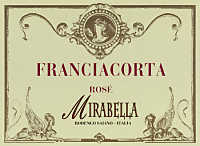
|
|
Franciacorta Rosé |
|
| Mirabella (Lombardy, Italy) | |
| Grapes: Chardonnay (40%), Pinot Blanc (40%), Pinot Noir (20%) | |
| Price: € 12.00 | Score: |
| This Franciacorta Rosé shows a brilliant onion skin pink followed by aromas of pale pink, very transparent, fine and persistent perlage. The nose denotes intense, clean, pleasing and refined aromas that start with hints of cherry, raspberry and bread crust followed by aromas of strawberry, hawthorn, yeast, tangerine, banana and cyclamen. The mouth has good correspondence to the nose, an effervescent and crisp attack, however balanced by alcohol, good body, intense flavors, agreeable. The finish is persistent with flavors of cherry, raspberry and strawberry. This Franciacorta Rosé referments in bottle on its lees for at least 24 months. | |
| Food Match: Pasta and risotto with fish and crustaceans, Dairy products, Roasted white meat, Roasted fish | |
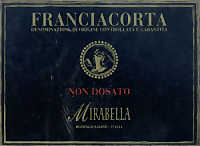
|
|
Franciacorta Non Dosato 2001 |
|
| Mirabella (Lombardy, Italy) | |
| Grapes: Chardonnay (50%), Pinot Blanc (30%), Pinot Noir (20%) | |
| Price: € 17.00 | Score: |
| This Franciacorta Non Dosato shows a pale golden yellow color and nuances of straw yellow, very transparent, fine and persistent perlage. The nose reveals intense, clean, pleasing, refined and elegant aromas which start with hints of bread crust, plum and banana followed by aromas of acacia, yeast, hawthorn, apple, pear, honey, grapefruit, hazelnut and mineral. The mouth has good correspondence to the nose, an effervescent and crisp attack, however balanced by alcohol, good body, intense flavors, pleasing roundness. The finish is persistent with flavors of plum, banana, grapefruit and hazelnut. This Franciacorta Non Dosato referments in bottle on its lees for at least 60 months. | |
| Food Match: Stewed fish, Roasted fish, Sauteed white meat | |
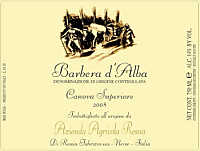
|
|
Barbera d'Alba Superiore Canova 2007 |
|
| Ressia (Piedmont, Italy) | |
| Grapes: Barbera | |
| Price: € 14.00 | Score: |
| Barbera d'Alba Superiore Canova shows an intense ruby red color and nuances of ruby red, little transparency. The nose denotes intense, clean, pleasing and refined aromas that start with hints of cherry, violet and plum followed by aromas of blueberry, vanilla, tobacco, chocolate, pink pepper, cinnamon and mace. The mouth has good correspondence to the nose, a tannic attack and pleasing crispness, however balanced by alcohol, good body, intense flavors, agreeable. The finish is persistent with flavors of cherry, plum and blueberry. Barbera d'Alba Superiore Canova ages for 18 months in cask followed by an aging in bottle for 3 months. | |
| Food Match: Roasted meat, Stewed and braised meat, Hard cheese | |

|
|
Barbaresco Canova 2006 |
|
| Ressia (Piedmont, Italy) | |
| Grapes: Nebbiolo | |
| Price: € 30.80 | Score: |
| Barbaresco Canova shows a brilliant ruby red color and nuances of garnet red, moderate transparency. The nose reveals intense, clean, pleasing, refined and elegant aromas which start with hints of cherry, violet and plum followed by aromas of raspberry, rose, vanilla, tobacco, blueberry, cocoa, cinnamon, mace and menthol. The mouth has excellent correspondence to the nose, a tannic attack and however balanced by alcohol, full body, intense flavors, pleasing crispness. The finish is very persistent with long flavors of cherry, plum and raspberry. Barbaresco Canova ages for 26 months in cask, 4 months in steel tanks and for 6 months in bottle. | |
| Food Match: Game, Roasted meat, Braised and stewed meat, Hard cheese | |
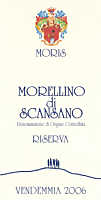
|
|
Morellino di Scansano Riserva 2006 |
|
| Moris Farm (Tuscany, Italy) | |
| Grapes: Sangiovese (90%), Cabernet Sauvignon, Merlot (10%) | |
| Price: € 16.90 | Score: |
| This Morellino di Scansano Riserva shows a brilliant ruby red color and nuances of ruby red, little transparency. The nose denotes intense, clean, pleasing and refined aromas which start with hints of black cherry, plum and violet followed by aromas of blueberry, black currant, vanilla, tobacco, cocoa and mace. The mouth has good correspondence to the nose, a tannic attack and however balanced by alcohol, good body, intense flavors, pleasing roundness. The finish is persistent with flavors of black cherry, plum and blueberry. This Morellino di Scansano Riserva ages in barrique for 12 months followed by an aging in bottle for at least 6 months. | |
| Food Match: Broiled meat and barbecue, Roasted meat, Braised and stewed meat, Hard cheese | |
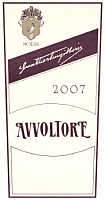
|
|
Avvoltore 2007 |
|
| Moris Farm (Tuscany, Italy) | |
| Grapes: Sangiovese (75%), Cabernet Sauvignon (20%), Syrah (5%) | |
| Price: € 30.00 | Score: |
| Avvoltore shows an intense ruby red color and nuances of ruby red, little transparency. The nose reveals intense, clean, pleasing, refined and elegant aromas which start with hints of black cherry, black currant and plum followed by aromas of blueberry, violet, blackberry, vanilla, rose, tobacco, cinnamon, chocolate and menthol. The mouth has good correspondence to the nose, a tannic attack and however balanced by alcohol, full body, intense flavors, agreeable. The finish is persistent with flavors of black currant, black cherry and plum. Avvoltore ages for 12 months in barrique followed by 6 months of aging in bottle. | |
| Food Match: Game, Roasted meat, Braised and stewed meat, Hard cheese | |
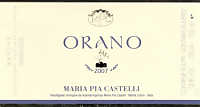
|
|
Orano 2007 |
|
| Maria Pia Castelli (Marches, Italy) | |
| Grapes: Sangiovese | |
| Price: € 12.00 | Score: |
| Orano shows a brilliant ruby red color and nuances of ruby red, moderate transparency. The nose denotes intense, clean, pleasing and refined aromas that start with hints of black cherry, plum and violet followed by aromas of blueberry, tobacco, chocolate, pink pepper, mace and vanilla. The mouth has good correspondence to the nose, a tannic attack and however balanced by alcohol, good body, intense flavors. The finish is persistent with flavors of black cherry, plum and blueberry. Orano ages for 12 months in barrique followed by at least 12 months of aging in bottle. | |
| Food Match: Roasted meat, Braised and stewed meat with mushrooms, Hard cheese | |
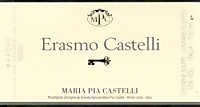
|
|
Erasmo Castelli 2006 |
|
| Maria Pia Castelli (Marches, Italy) | |
| Grapes: Montepulciano | |
| Price: € 25.00 | Score: |
| Erasmo Castelli shows a deep ruby red color and nuances of ruby red, impenetrable to light. The nose reveals intense, clean, pleasing, refined and elegant aromas that start with hints of black cherry, plum and blackberry followed by aromas of violet, vanilla, blueberry, chocolate, tobacco, licorice, leather, juniper, mace and menthol. The mouth has good correspondence to the nose, a tannic attack and however balanced by alcohol, full body, intense flavors, pleasing roundness. The finish is very persistent with long flavors of black cherry, plum and blackberry. Erasmo Castelli ages for 24 months in barrique followed by 12 months of aging in bottle. | |
| Food Match: Game, Roasted meat, Braised and stewed meat, Hard cheese | |
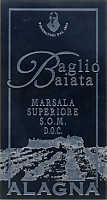
|
|
Marsala Superiore S.O.M. Baglio Baiata |
|
| Alagna (Sicily, Italy) | |
| Grapes: Grillo, Catarratto | |
| Price: € 9.00 | Score: |
| Marsala Superiore S.O.M. Baglio Baiata shows a deep amber yellow color and nuances of amber yellow, pretty transparent. The nose reveals intense, clean, pleasing and refined aromas which start with hints of rancho, dried fig and almond followed by aromas of caramel, date, leather, citrus fruit peel and honey. The mouth has good correspondence to the nose, an alcoholic attack and however balanced by alcohol, full body, intense flavors, pleasing crispness. The finish is persistent with flavors of dried fig, date and almond. Marsala Superiore S.O.M. Baglio Baiata ages for at least 2 years in cask. | |
| Food Match: Aperitifs, Hard cheese | |
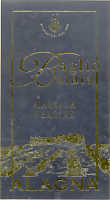
|
|
Marsala Vergine Baglio Baiata |
|
| Alagna (Sicily, Italy) | |
| Grapes: Grillo, Catarratto | |
| Price: € 12.00 | Score: |
| Marsala Vergine Baglio Baiata shows a brilliant amber yellow color and nuances of amber yellow, transparent. The nose denotes intense, clean, pleasing, refined and elegant aromas which start with hints of rancho, dried fig and almond followed by aromas of date, leather, honey, licorice, citrus fruit peel, vanilla and nail polish. The mouth has good correspondence to the nose, an alcoholic attack and however balanced by alcohol, full body, intense flavors, pleasing crispness. The finish is persistent with flavors of dried fig, honey and almond. Marsala Vergine Baglio Baiata ages for at least 5 months in cask. | |
| Food Match: Aperitifs, Hard and piquant cheese | |
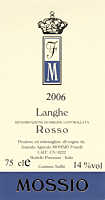
|
|
Langhe Rosso 2006 |
|
| Mossio (Piedmont, Italy) | |
| Grapes: Barbera (40%), Nebbiolo (40%), Dolcetto (20%) | |
| Price: € 16.00 | Score: |
| This Langhe Rosso shows an intense ruby red color and nuances of ruby red, little transparency. The nose reveals intense, clean, pleasing, refined and elegant aromas that start with hints of black cherry, plum and blackberry followed by aromas of blueberry, violet, raspberry, vanilla, tobacco, rose, chocolate and cinnamon. The mouth has good correspondence to the nose, a tannic attack and however balanced by alcohol, good body, intense flavors, pleasing crispness. The finish is persistent with flavors of cherry, plum and raspberry. This Langhe Rosso ages for 12 months in cask followed by 2 months of aging in bottle. | |
| Food Match: Roasted meat, Braised and stewed meat, Hard cheese | |
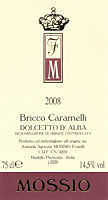
|
|
Dolcetto d'Alba Bricco Caramelli 2008 |
|
| Mossio (Piedmont, Italy) | |
| Grapes: Dolcetto | |
| Price: € 11.70 | Score: |
| Dolcetto d'Alba Bricco Caramelli shows a deep ruby red color and nuances of purple red, little transparency. The nose reveals intense, clean, pleasing, refined and elegant aromas which start with hints of cherry, blackberry and plum followed by aromas of raspberry, strawberry, cyclamen, violet, blueberry, peach, almond and anise. The mouth has good correspondence to the nose, a tannic attack and however balanced by alcohol, good body, intense flavors, pleasing crispness. The finish is very persistent with long flavors of cherry, blackberry and plum. Dolcetto d'Alba Bricco Caramelli ages in steel tanks. | |
| Food Match: Cold cuts, Pasta with meat and mushrooms, Roasted white meat, Sauteed meat | |
|
||||||||
|
DiWineTaste Polls
|
| |||||||
Privacy Policy | |||||||


| Copyright © 2002-2024 Antonello Biancalana, DiWineTaste - All rights reserved |
| All rights reserved under international copyright conventions. No part of this publication and of this WEB site may be
reproduced or utilized in any form or by any means, electronic or mechanical, without permission in writing from DiWineTaste. |